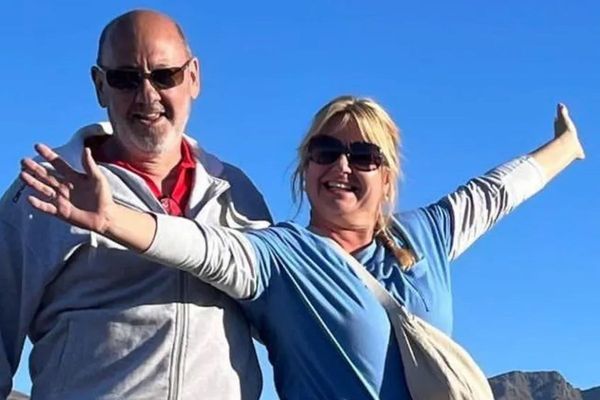
Rebecca Horn, the German installation artist known for her surreal and sensual “art machines” incorporating musical instruments, bird feathers and mechanical engineering, has died aged 80, her foundation has confirmed.
According to the Moontower Foundation, Horn’s death was on Friday evening in Bad König, in her native western German Odenwald region.
Born in 1944, a year before the end of the second world war, Horn studied in Hamburg and London before making herself a name as an artist in New York and Paris.
Her early work bore the hallmark of the Fluxus movement: in the late 1960s and 1970s she worked on Unicorn, a costume for a fellow student whom she sent on a semi-naked walk through the woods one summer morning.
Masks and headdresses became a common feature: in 1972 she made Pencil Mask a work adorned with spike-like pencils, instructing its wearers to move their heads rhythmically from left to right in front of a white canvas wall.
Musical instruments such as pianos and violins were another common component. In 1992, Horn took up singer Peter Gabriel’s commission to visualise his song Secret World, building an installation with a violin bow and opera binoculars inside an old suitcase she had purchased at a Berlin flea market.
One of her best-known works, 1994’s Turtle Sighing Tree, is an oversized arboreal thicket made of copper pipes, emitting piercing screams and wails in different languages at regular intervals.
Speaking to the Guardian in 2005, Horn said she had been drawn to visual art partly because of the troubled history of her native German language. “We could not speak German, Germans were hated,” she said. “We had to learn French and English. We were always travelling somewhere else, speaking something else. But I had a Romanian governess who taught me how to draw. I did not have to draw in German or French or English. I could just draw.”
As well as installations and sculptures, Horn also produced literary texts and screenplays, and directed films and operas. Her 1990 indie comedy Buster’s Bedroom, starring Donald Sutherland and Geraldine Chaplin, paid homage to slapstick icon Buster Keaton, a lifelong inspiration for her work.
In 2007, Horn set up a studio inside a factory once owned by her family, at Bad König. This is the Moontower Foundation, dedicated to preserving her works and supporting young artists. Always a private person, Horn retreated from public life after suffering a stroke in 2015.







